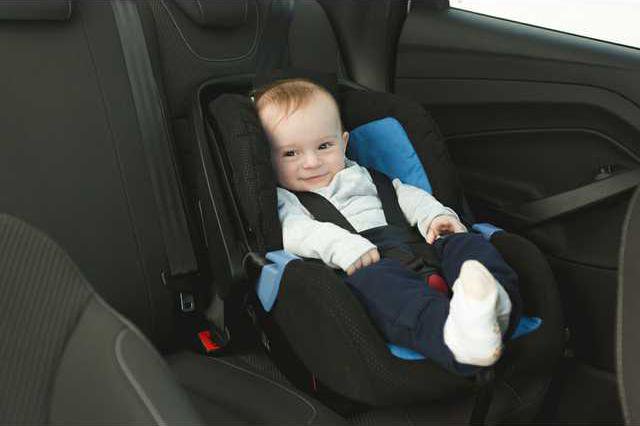Winter driving can bring plenty of hazards, from exposing a little one to harsh air to slippery roads. However, you might be unknowingly endangering your child without even realizing it.
Children should not wear puffy winter coats underneath car seat straps. Automotive safety engineer, Emily A. Thomas, Ph.D. said "A bulky coat and a car seat can be a dangerous combination ... As a general rule, winter coats should not be worn underneath a car seat harness because that can leave the harness too loose to be effective in a crash."
Apparently the padding that fills the coat to insulate for warmth prevents the straps from being sufficiently tight, preventing the seatbelt technology from working effectively.
A video of a child-size dummy wearing a coat in a simulated car accident really drives this point home.
How do you know if your child's coat is too big?
First, put the coat on your child and buckle him into the car seat. Tighten the straps so you can no longer pinch the strap between your thumb and forefinger.
Next, unbuckle your child without loosening the straps at all, remove his coat and buckle him back in the car seat again. Check to see how much slack remains on the seatbelt straps. If the straps are too tight to pinch, then it's safe to wear under the seatbelt. However, if there is now slack on the straps, you should not allow your child to wear their coat in the car seat.
So how do you keep your little one both safe and warm?
Just because your child shouldn't wear a coat underneath her seatbelt doesn't mean she needs to freeze. Here are five alternatives to keep your little one warm:
Children should not wear puffy winter coats underneath car seat straps. Automotive safety engineer, Emily A. Thomas, Ph.D. said "A bulky coat and a car seat can be a dangerous combination ... As a general rule, winter coats should not be worn underneath a car seat harness because that can leave the harness too loose to be effective in a crash."
Apparently the padding that fills the coat to insulate for warmth prevents the straps from being sufficiently tight, preventing the seatbelt technology from working effectively.
A video of a child-size dummy wearing a coat in a simulated car accident really drives this point home.
How do you know if your child's coat is too big?
First, put the coat on your child and buckle him into the car seat. Tighten the straps so you can no longer pinch the strap between your thumb and forefinger.
Next, unbuckle your child without loosening the straps at all, remove his coat and buckle him back in the car seat again. Check to see how much slack remains on the seatbelt straps. If the straps are too tight to pinch, then it's safe to wear under the seatbelt. However, if there is now slack on the straps, you should not allow your child to wear their coat in the car seat.
So how do you keep your little one both safe and warm?
Just because your child shouldn't wear a coat underneath her seatbelt doesn't mean she needs to freeze. Here are five alternatives to keep your little one warm:
- Placing the coat on the child backwards after buckling the seat.
- Putting blankets over your child (these can be easily removed as the car heats up.)
- Get one of these coats specially designed not to get between your baby's body. and the car seat straps, therefore not obstructing the efficiency of the seatbelt
- Turn the car on and let it heat up before taking your child into it.
- Buy a car seat cover that keeps your baby warm without sacrificing safety.








